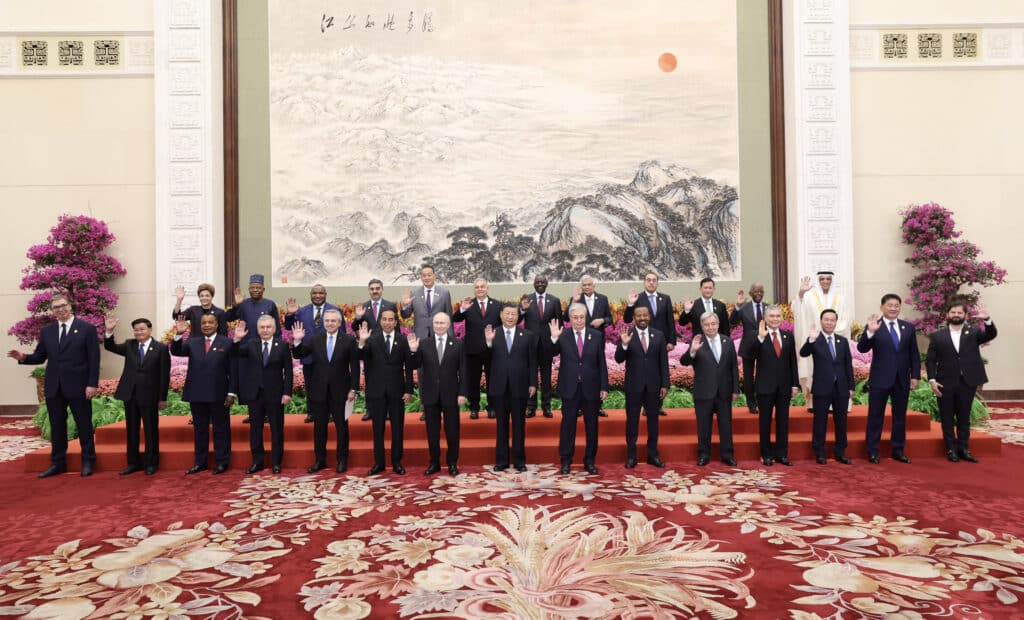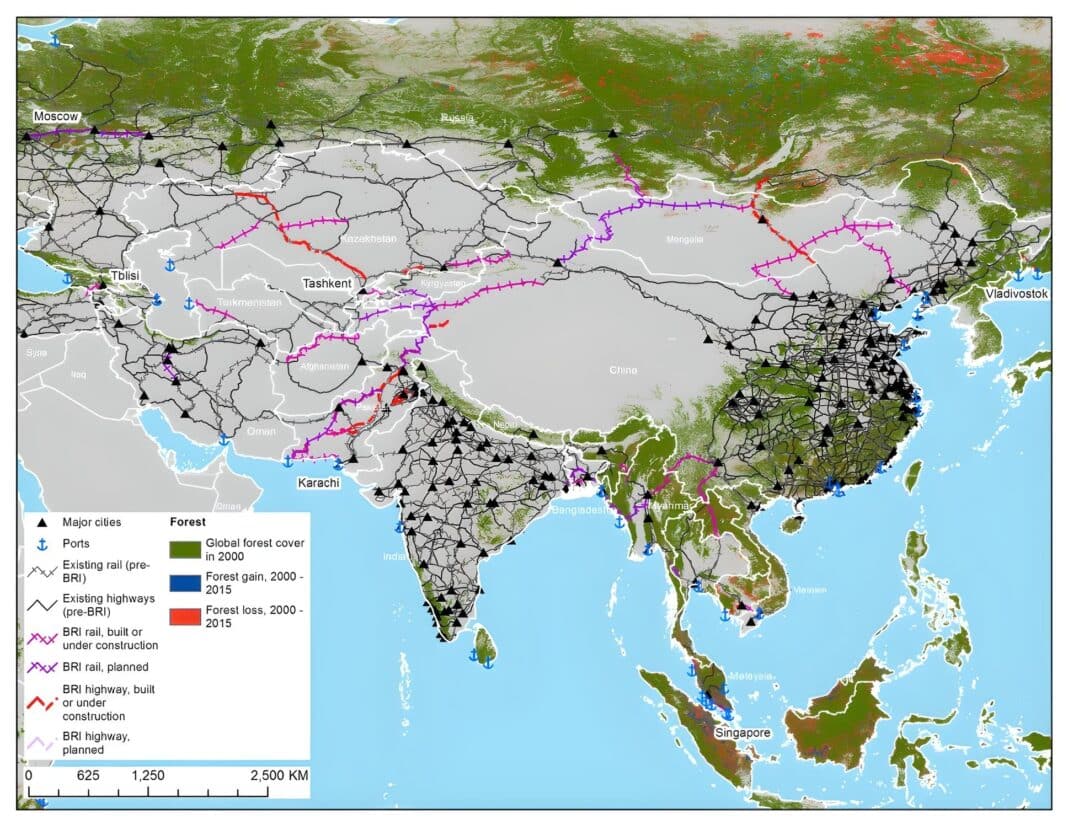More than 130 countries have attended China’s third Belt and Road Forum – including Russian leader Vladimir Putin and, for the first time, key figures from the Afghan Taliban.
The summit celebrates ten years since Chinese President Xi Jinping launched the BRI plan to expand Beijing’s economic and political influence.
Significantly, the summit saw fewer heads of state or government attend the forum, with just 23 attending talks on Tuesday and Wednesday and no prominent European leaders.
Wood Central understands that two only European heads of state in attendance were Serbian President Aleksandar Vucic and Hungarian Prime Minister Viktor Orban.
And whilst much of the commentary has reported that the initiative is starting to lose steam as Europe turns towards the NATO-US Alliance, it is a force in forest markets, especially South Asia and Central Africa.
The BRI involves a massive injection of Chinese funds into infrastructure projects, including rail, road, energy, ports, telecommunications, coal and timber, linking the Eurasian landmass by road—the Silk Road Economic Belt—and by sea—the Maritime Silk Road.

By the numbers, the total forest area of BRI countries represents 30.5% of the global forest area, with total forest product trade between the countries growing from US $48 billion in 2013 to US $72 billion in 2021.
Often described as “the World’s Factory”, China produced 71% of the world’s manufactured plywood in 2020, and whilst that number has dropped, Wood Central understands that Chinese companies are investing in Malaysian and Indonesian plywood manufacturing.
As the world’s largest consumption market, it swallowed 18% of global demand and 71% of Asian demand for forest products. It has the highest reliance on imports – with the share of imported wood at 55%, including sawn timber, logs, pulp and paper.
For China, BRI provides a funnel of logs and sawn wood, with 41 million cubic metres of logs and sawn wood imported in 2021, manufactured and sold through global markets.
As reported by AP News, China is looking to pivot towards “smaller and greener projects” and will instead rely on investment by Chinese companies rather than government development loans.
Earlier this month, Wood Central reported that Chinese companies are already working with Russia to transport 83% of Russian timber through the Chinese ‘red lane.’

For their part, Chinese shipping companies like the Shandong Port Group play a crucial role in strengthening trade with Russia through Arctic trade routes.
Last month, the company, which has four seaports in the Chinese Shandong region, visited the Russian Arctic region to look at local port development projects.
This pivot by China away from “debt trap” projects to company-led investments has seen 500 Chinese companies now investing in forest operations across 19 BRI Countries, with significant Russian investments supported by similar investments in the Association of Southeast Asian Nations (ASEAN), Uzbekistan and Kazakhstan.
It also includes Central Africa, where China has invested heavily in building trade routes, with more than 4.2 tonnes of timber exported over the past decade with a constant supply for China’s veneer and plywood manufacturing hubs.
According to Chinese-state media, the BRI has benefited the world “by improving connectivity in an open global economy, said state leaders, ministers and senior officials from international organisations.”
In his opening address, Chinese Vice-Premier Ding Xuexiang said the BRI, which aims to promote development, advocate for win-win cooperation and deliver hopes, “has become a pathway toward benefiting the world and bringing happiness to the people.”
Kao Kim Hourn, secretary-general of the Association of Southeast Asian Nations, said the BRI has promoted global and regional connectivity, and ASEAN will have more opportunities in infrastructure development.
The forum also launched the Beijing Initiative for Deepening Cooperation on Connectivity, “aiming to constantly enhance infrastructure connectivity among countries involved in the BRI, and make the world economy more open, inclusive, balanced and beneficial for all.”
The Beijing Initiative proposed improving connectivity in six aspects:
- Enhancing the performance and connectivity of transport infrastructure.
- Empowering the stable and sustainable development of energy.
- Enhancing the capacity of water facilities to safeguard people’s livelihood.
- Promoting the connectivity of information infrastructure.
- Strengthening “soft connectivity” of rules and standards.
- Optimising the international business environment.







